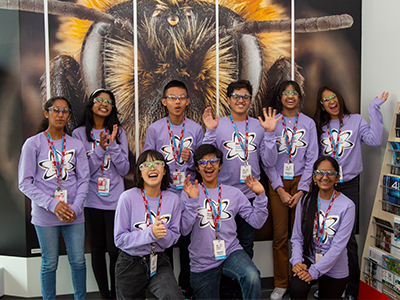| |
Learn More About the 3M Young Scientist Challenge With Discovery Education
The 3M Young Scientist Challenge with Discovery Education is nation’s premier middle school science competition and 2023 marks the 16th year of the competition. The annual challenge invites students in grades 5 through 8 to compete for an exclusive mentorship with a 3M scientist, a $25,000 grand prize, and the chance to earn the title of “America’s Top Young Scientist.”
To enter, students in grades 5 through 8 submit a one-to-two-minute video explaining an original idea using science to help solve an everyday problem. All entries are reviewed by a diverse group of judges and evaluated on their creativity, scientific knowledge, and communication skills. Videos can be recorded using a cell phone or digital camera and will not be judged on production skills.
2023 entries are currently open and are being accepted through April 27, 2023 at YoungScientistLab.com.
Previous challenge finalists have collaborated with 3M scientists to create solutions to a wide variety of real-world problems, including mid-ear infections, COVID-19, water conservation, food waste, alternative energy sources, cancer treatments, energy consumption and transportation efficiency.
America’s Top Young Scientists have gone on to give TED Talks, file patents, found nonprofits, make the Forbes 30 Under 30 list, ring the bell at the New York Stock Exchange and exhibit at the White House Science Fair. These young innovators have also been named Time Magazine’s first Kid of the Year, featured in The New York Times Magazine, Forbes and Business Insider, and have appeared on national television programs such as Good Morning America, The Ellen DeGeneres Show, and more.
| |  | | | Finalists of the 3M Young Scientist Challenge with Discovery Education gathered at the 3M Carlton Science Center in Maplewood, Minnesota to share their ideas and inventions.
| | | |
Discovery Education
Discovery Education, which partners with 3M on the Challenge, is the worldwide edtech leader whose state-of-the-art digital platform supports learning wherever it takes place.
“A real joy of the 3M Young Scientist Challenge is the connections the students make with each other and their mentors,” said Amy Nakamoto, general manager of social impact at Discovery Education. "The Challenge inspires students to use their creativity, collaboration, communication and critical thinking skills to make the world a better place."
Through its award-winning multimedia content, instructional supports, and innovative classroom tools, Discovery Education helps educators deliver equitable learning experiences engaging all students and supporting higher academic achievement on a global scale.
Discovery Education serves approximately 4.5 million educators and 45 million students worldwide, and its resources are accessed in over 100 countries and territories. Inspired by the global media company Discovery, Inc., Discovery Education partners with districts, states and trusted organizations to empower teachers with leading edtech solutions that support the success of all learners. | |